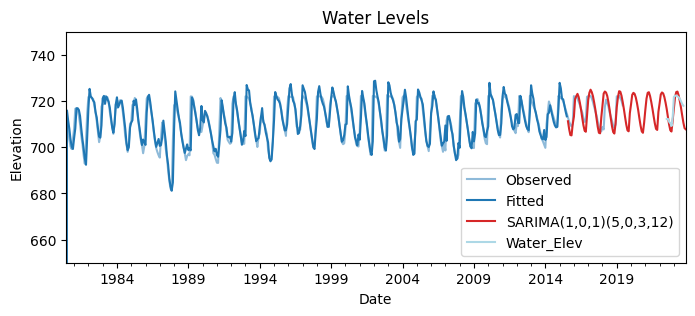Reservoir Water
Time-series forecasting with SARIMA
A reservoir is an artificial lake where water is stored, and its outlet is dammed to control the water level for uses such as water supply, irrigation, hydroelectric power, etc. In California, there are more than a thousand major reservoirs, most of which are located in the central and northern portions of the state. As climate change increasingly impacts California’s water resources, reservoir storage become increasingly variable between years. Water supply projections, therefore, also become challenging and less predictable.
This project focuses on a reservoir in Napa Valley, California, which serves as one of the
city's three water supplies. In 2020, the valley faced a severe drought, with reservoir
storage expected to plummet to 33% by November. The city declared a water emergency in July
2020. Unfortunately, there was a 3-year gap within the water level monitoring data, spanning
from June 2019 to July 2022. As part of the state's Division of Safety of Dams (DSOD) reporting
requirements, one of the objectives of this project was to predict or forecast the missing water
levels between June 2019 and June 2022, thus bridging the gap.
The reservoir data is a time series of recorded water levels describing the reservoir capacity over a period of time. Water levels, which are converted to elevation (NAVD88), were manually collected as early 1980s. The data interval varies from occasionally weekly data to, most of the time, monthly data. As a result, the data preparation process was a bit challenging, at the cost of coarser data resolution for model fitting. The project involved the application of the Seasonal ARIMA (SARIMA) model to fit data and forecast.
Visit the time-series repository for more details:
[GitHub/time-series-reservoir-water-level]

Thumbnail image generated by hotpot.ai
Last update: 7/2024